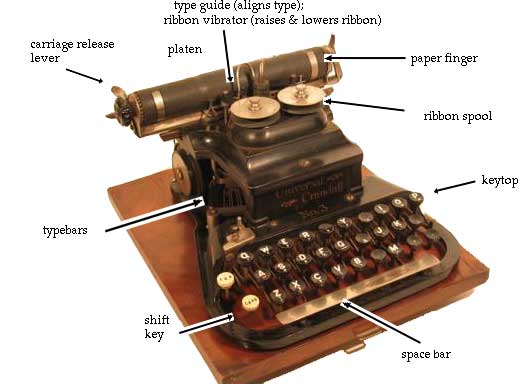The issue of whether to single space or double space after a fullstop has become a debatable issue after an article appeared in The Globe and the Mail.
I've just been made to realise that the old school of typwriting would double space after each fullstop. But with the advent of computers, a single space would be sufficient.
For reasons why both conventions have been adopted, please read the article below and if you want to hear the many comments about this issue, please go to the link after the aticle.
Rodney
P.S. I normally single space after each fullstop. Saves one less stroke and a single space stop does not look much different than a double spaced stop.
------------------------------------------------------
Russell Smith: On Culture
To double space or not? That is the question
RUSSELL SMITH
Columnist profile
From Thursday's Globe and Mail
Published Wednesday, Jan. 19, 2011 4:30PM EST
Last updated Friday, Jan. 21, 2011 4:40PM EST
Why there is an Internet, reason No. 3579: Where else could a passionate debate about how many spaces to type after a period grow to occupy hundreds of pages of text? It would simply be too costly to print and distribute these polemics on paper, but the level of detail and passion in the argument is still fascinating and revealing. I wonder how we ever got on without nerd blogs.
Why is every typographer in North America arguing about spaces and periods online right now? The fire was lit by Farhad Manjoo, a writer for Slate.com, who recently wrote an essay complaining that some people still do what they were taught in 1970s typing classes, and insert two spaces after every period. Manjoo says, with a strange fury, that this practice is not only aesthetically unattractive, but “totally, completely, utterly and inarguably wrong” (whatever “wrong” means – it appears he is making the leap, for unarticulated reasons, from the aesthetic realm to the moral).
Why the sudden fixation with archaic typography? Because of the WikiLeaks scandal, of course. Manjoo was reading some of Julian Assange’s recently leaked e-mails to a young lover. And he was struck not only by the gooey poetry of them, but also by the now strange convention of double spacing after a period. Manjoo was incensed that a guy so familiar with computers would cling to an obsolete tradition.
To remind you of what that tradition looks like, the following paragraph embraces it.
Manjoo is right, of course, that current convention has abandoned the double space after a period. And it is because of computers. When we typed on typewriters we had to use monospaced type – that is, type that allocated the same space for every letter. That type ends up looking loose – a word with i’s in it, for example, will look a bit spaced out. So an extra space is added just to make the ends of sentences more clear. But computers are able to use proportional fonts – fonts that automatically adjust their spacing depending on the letters. (The exception is Courier.) Double spaces after periods are no longer necessary, and they break the text up with holes. They also take up valuable space in a tight medium such as this. They are no longer taught as imperative to writing business letters or anything else. In fact, HTML automatically reformats text for browsers to remove the double spaces. (See how funny this looks?)
It turns out, however, the debate is far from simple. People – especially those over 40 who were taught to type in high school – feel emotional about the past. Thousands of comments followed the post. Some of them said they added two spaces – or even taught their innocent high-school students to do so – simply because that is how they learned, and they couldn’t change now. The debate even made it to the online pages of The Atlantic. The most articulate and eloquent dissent came from a technology blogger called Tom Lee, who waxed poetic about Manjoo’s “bullying” prescriptions: “It’s disrespectful to let writing’s constituent elements bleed into one another through imprecise demarcations.”
What is beautiful about these debates is that they evolve, almost always, from minutiae into larger issues. At stake here is really the arbitrariness of so many rules of writing. We respect most of them merely for the sake of consistency. Think, for example, about the vexed question of the serial comma – that’s the comma that you might or might not put before the last element in a list (“we bought apples, cheese, and machine guns”). It is sometimes accepted by journals and sometimes not. There is no good reason, other than tradition, to put it in or to omit it.
Tom Lee also attacks, amusingly, the authority that typographers attempt to impose on lay people: Typographers are “... drunk on the awesome power of their proportional fonts, and sure of the cosmic import of the minuscule kerning decisions that it is their lonely duty to make.” This is the kind of intelligent obsession with the microscopic that can only flourish in cyberspace.
I am curious about how many readers also want to rebel against the typographers. Do you still use two spaces after a period (and what do you think of the serial comma, too)? Tell me at rsmith@globeandmail.com.
© 2011 CTVglobemedia Publishing Inc. All Rights Reserved.

Source: http://www.theglobeandmail.com/news/arts/russell-smith/to-double-space-or-not-that-is-the-question/article1876000/
After the original article appeared, it provoked national interest in Canada and the author of the article summarised his findings in this next article. To read it, please go to:
No comments:
Post a Comment